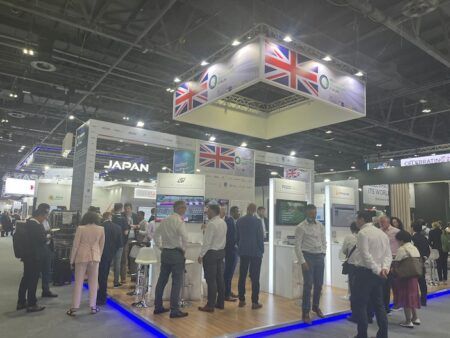One of the UK’s leading manufacturers of ITS equipment, AGD Systems, will be showcasing two of its next-generation traffic and pedestrian control systems at 2018’s Intertraffic Amsterdam event on March 20-23, with one of the products having been recently deployed in Staffordshire.
At Intertraffic, AGD will be demonstrating the new large-zone IP-capable, real-time video 645 Pedestrian Detector, and the 318 Traffic Control Radar. AGD’s commercial director, Ian Hind, commented, “These next-generation solutions move ITS to the next level. User communication with our traffic and pedestrian control devices is wireless, making deployment easy and setup simple. These products employ our WiFi Touch-setup for quick configuration and zone or loop optimization. The 645 Pedestrian Detector delivers live video, and its IP capability allows control rooms to receive the information they need to ensure optimal performance, and make real-time changes on the street. We’re already getting brilliant feedback about the 645 detector, which launched last year.”
As more local authorities aim to eradicate in-ground systems from their road networks, and cut the costs of installation, repair and ongoing maintenance of detection at junctions, a new breed of above-ground radars provide a suitable alternative to loops and magnetometers. Developed from enforcement-grade technology, the AGD 318 provides accurate ‘virtual loop’ detection with speed discrimination, and can emulate two inductive loops to a range of 492ft (150m) or provide lane-specific detection up to 131ft (40m) for a range of applications. Because it is pole-mounted, it requires no ducting or disruption to road users.
Hind noted, “Staffordshire County Council recently used our 318 Radar to replace speed detection loops at a busy junction, and the success of the solution has resulted in their decision to avoid in-ground detection wherever possible in the future. The 318 detects vehicle type based on range, size, speed and direction of travel, enabling green wave strategies in which bikes and buses can be prioritized over cars. Using this technology can save councils many thousands of pounds.”
Martin Fenlon, principal signals engineer at Staffordshire County Council, explained, “Because the road surface was in such poor condition where the loops would have been installed, the 318 radar gave us an ideal, non-intrusive solution for detection. Road surfaces are not being maintained as well as they once were, due to budget constraints, which can result in problems for in-road detection. Traffic management costs when you cut loops into the road are huge, so loop-free technology is the only way to go as far as we’re concerned.”




